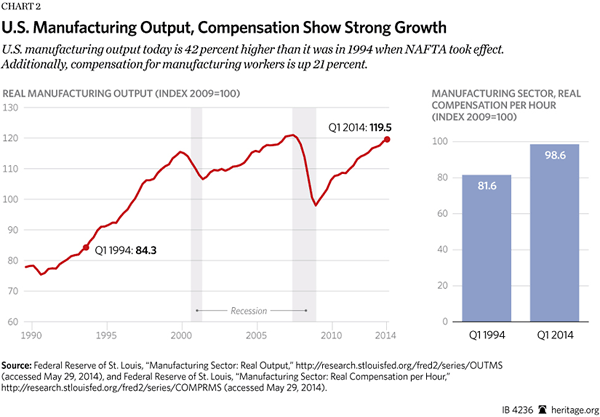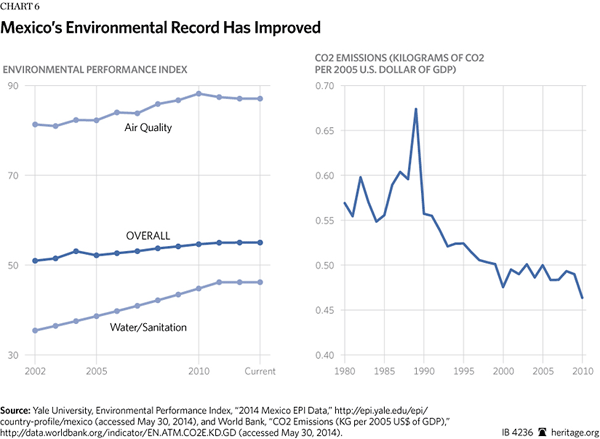In 1993, critics of the proposed North American Free Trade Agreement (NAFTA) made dire predictions about what would happen if Congress approved it. However, wiser heads prevailed, and NAFTA took effect on January 1, 1994.
Today, the same misguided arguments are being used in connection with new free trade agreements such as the proposed Trans-Pacific Partnership (TPP) and the Transatlantic Trade and Investment Partnership (TTIP). A look at some of the critics’ claims reveals how things really turned out.
Claim: “You’re going to hear a giant sucking sound of jobs being pulled out of this country.”[1]
Fact: Since NAFTA was enacted, the United States has added nearly 25 million net new jobs.
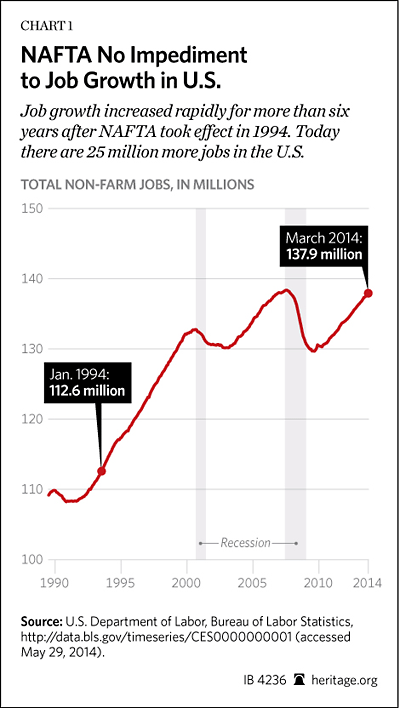
Claim: NAFTA has reduced U.S. manufacturing.[2]
Fact: U.S. manufacturing output has actually been increasing.
The government’s Index of Real Manufacturing Output increased from 84.3 in the first quarter of 1994 to 119.5 in the first quarter of 2014.[3] Manufacturing workers also earn much more now than they did when NAFTA was passed. Real compensation per hour in the manufacturing sector is up over 20 percent since 1994.
There are fewer U.S. manufacturing jobs now than in 1994 because manufacturing workers are much more productive now than they have ever been. The average manufacturing worker produces nearly twice as much per hour today as in 1994.[4] As Heritage Foundation labor economist James Sherk has observed:
Advances in computers and robotics enable machines to perform many rote tasks that once required human labor. Manufacturers have replaced human labor with these machines in their production processes.... Computers and robots now do tasks that once required workers on an assembly line.... This has changed the types of workers that manufacturers need. Manufacturers need fewer unskilled workers to perform rote tasks, but more highly skilled workers to operate the machines that automated those tasks.... Manufacturing job opportunities have increased for skilled workers even as overall manufacturing employment has fallen.[5]
Claim: “Real wages in Mexico have fallen significantly below pre-NAFTA levels as price increases for basic consumer goods have exceeded wage increases.”[6]
Fact: Real wages in Mexico are higher than ever.
Since 1995, real wages are up 9.1 percent. Since the bottom of Mexico’s peso crisis in 1997, real wages are up 23.8 percent.
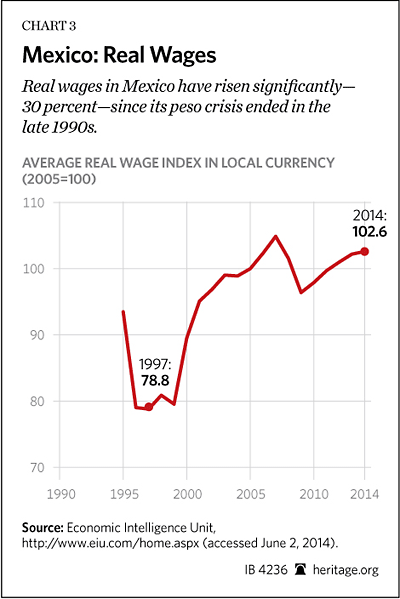
Claim: “NAFTA has contributed to downward pressure on U.S. wages.”[7]
Fact: Real wages for U.S. workers are 12.6 percent higher now than when NAFTA took effect.
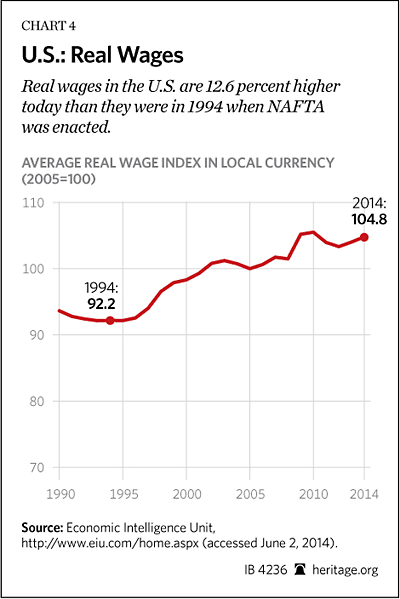
Claim: “NAFTA Devastates Mexico’s Rural Sector, Increases Poverty.”[8]
Fact: NAFTA has reduced poverty in Mexico.
In 1994, 14 percent of people in Mexico lived on less than $2 per day. Since NAFTA passed, the percentage of people in Mexico living on less than $2 per day has dropped to less than 5 percent.
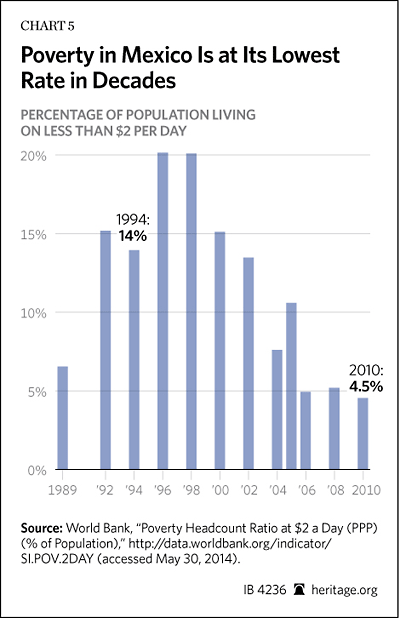
Claim: “The environmental provisions of NAFTA have failed to result in heightened enforcement, let alone a significant rise in standards.”[9]
Fact: NAFTA has improved Mexico’s environment.
Since Yale University’s Environmental Performance Index was first released in 2002, Mexico’s rating has improved from 50.98 to 55.03.[10] Child mortality has declined, the air and water are cleaner, and agricultural subsidies have been reduced.
In measuring environmental progress, it makes sense to look at how clean the environment is, not how many pages of environmental regulations are on the books or how many people have been added to government regulatory agencies. In general, countries with low trade barriers actually have cleaner environments than do those that restrict trade.[11]
Carbon emissions are up in Mexico as a result of the country’s economic growth—real gross domestic product (GDP) is up 55 percent since 1994—but emissions as a percentage of GDP have declined since NAFTA took effect.[12]
An Example to Follow
NAFTA’s legacy includes more jobs, higher wages, cleaner environments, more manufacturing output, less poverty, and (perhaps most significantly) increased economic freedom. Done right, TPP and TTIP agreements will generate similar benefits.
—Bryan Riley is Jay Van Andel Senior Analyst in Trade Policy in the Center for Trade and Economics, a department of the Institute for Economic Freedom and Opportunity, and Donghun Yu is a Visiting Fellow, at The Heritage Foundation.
